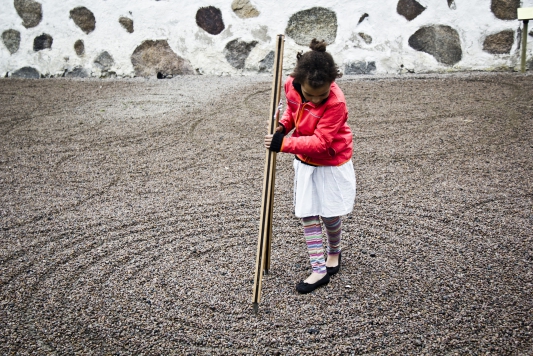Wanås Konst DANCE ME! 2014







Three Double Wall Bars (2014)
Constant Hanging (2014)
Circles (2013) 2014
Skipping Rope Pillar (2005) 2014
Swings (2002) 2014
Season exhibition Dance Me!
Wanås Konst, Sweden May 18th–Nov 2nd, 2014
With Tadashi Kawamata, Sigalit Landau, Molly Haslund, Skånes Dansteater, Rachel Tess, Christian Jankowski, Salla Tykkä.
Participating with new sculpture work Three Double Wall Bars and the performance Constant Hanging as well as Circles(2013), Skipping Rope Pillar (2005) and Swings (2002)
Review in Danish;
www.kunsten.nu/artikler
news.cision.com/wanas-konst
Performances during the exhibition:
Circles Drawing Upon the Universe
May 17th at the pre/press opening
May 18th at the official opening
Constant Hanging
Aug 13th between 1pm and 3pm
A performance based on instructions.
By the sculpture Three Double wall Bars
Constant Hanging
Nov 1st & 2nd 1pm and 3pm
A performance based on instructions.
By the sculpture Three Double wall Bars
Finissage/last day of the season.
For the season Molly Haslund shows a series of sculptures in the Wanås Park. She opens new entry points to her sculptures and works exclusively with well known objects which she modifies.
She calls her sculptures Coordination Models and each of them are titled; Skipping Rope Trunk, Swings, Compasses - a new work is titled Three Double Wall Bars; It comes with a performance created entirely by the audience, a minimum of six participants, based on a set of minimal instructions.
Coordination Models (2002-)
The series Coordination Models involves the audience in reflecting on how we move in public space. Through modifications of familiar objects like skipping ropes, hopscotch grids, swings and compasses, Haslund creates alternative systems of movement. These not only challenge the motor skills of the individual participant, the participants also have to decode the principles of the systems in order to coordinate their movements with the group to ensure the coordination models function optimally. When this is achieved, a shared rhythm emerges, elevating the models from standard playground equipment to complex collaboration modules of mutual dependency between the individual and group that reimagine the potential and limits of physical, contemplative, and social spaces
Three Double Wall Bars (2014)
On the bank of a forest lake in Wanås Konst Sculpture Park Haslund has installed a sculpture consisting of three free-standing wooden wall bars. At first glance they are reminiscent of the equipment in childhood gyms or the outdoor exercise equipment in public space today. Wall bars for gyms were invented in the 1800s by the Swedish gymnastics teacher Pehr Henrik Ling, who also invented a system of ‘medical gymnastics’ that spread worldwide. Haslund’s Three Double Wall Bars is a modification of Ling’s wall bars, but on closer examination there are several elements that distinguish the structures here from the originals. Installed in a perfectly straight line in the idyllic landscape, the wall bars look like a minimalist sculpture with a touch of the surreal, but the work itself is not complete until visitors follow the instructions for the performance Constant Hanging that is an integral part of the sculpture. The instructions are mounted on a sign next to the sculpture, and simply instruct six people to join each other in holding onto the wall bars and hanging without their feet touching the ground for as long as they can. As soon as someone lets go, another member of the audience can step in. This transforms the sculpture into a structure for a complex social choreography, constantly changing according to the dynamics between the participants, as well as their stamina, enthusiasm, and determination.
Instructions for Constant Hanging:
1.
Six people agree to start off the performance at the same time.
They hang with their hands from each wall bar, without touching
the ground, for as long as they can. The rest of the group is an
active audience.
2.
As soon as one of the six hanging people lets go of a wall bar,
she or he rejoins the audience.
3.
Someone from the audience immediately takes over the
empty wall bar,so that each side of every single wall bar
module is constantly activated by a hanging person.
4.
The action of hanging, replacing and joining the audience
continues as a loop.
5.
When everyone in the group has hung from a wall bar
once, a new round with a different order, timing and
formation can begin.
6.
Continue the activity as long as you can, even if
the group gets smaller.
Three Double Wall Bars is now a part of the
Wanås Konst permanent collection.
Photographers Mathilde Haaning, Jeanette Land Schou
Video Jeanette Land Schou
Supported by Wanås Konst, The Danish Arts Foundation, The Danish Art Workshops
wanas.se/english/ART/Program2014